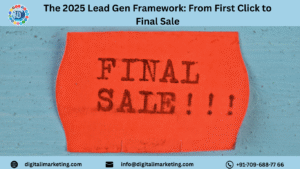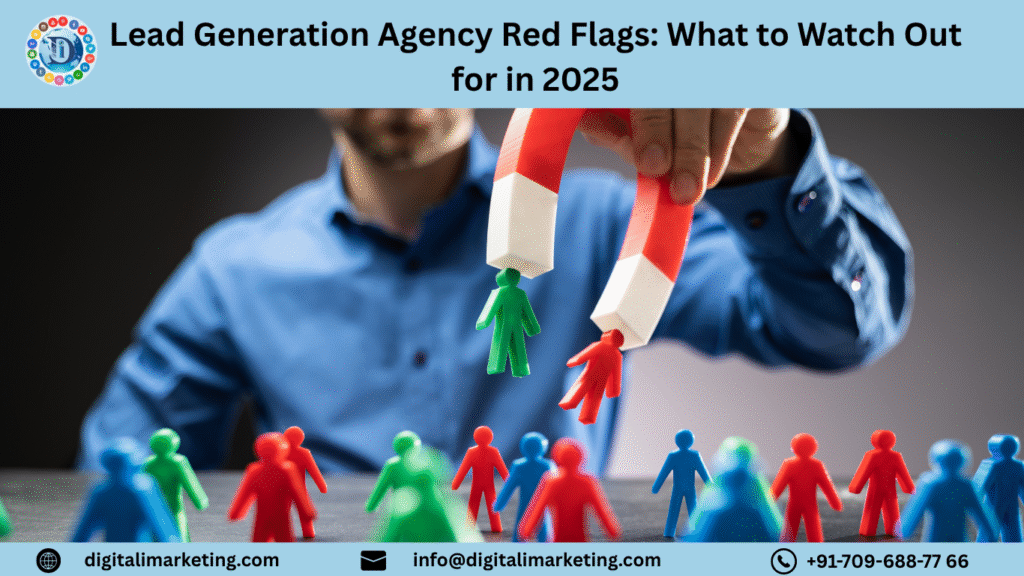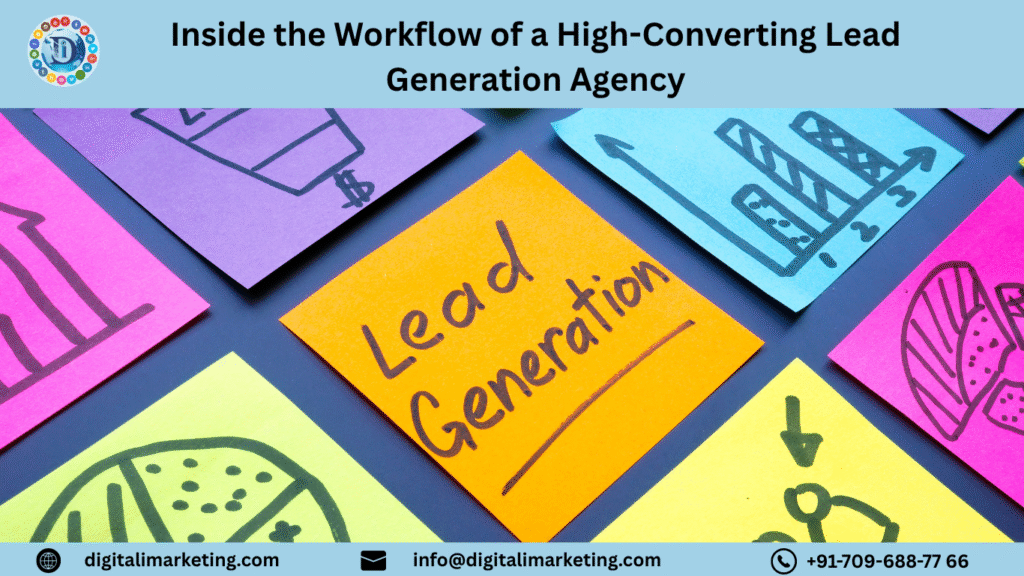
Generating quality leads is the lifeblood of any business in 2025. But with evolving consumer behavior, AI-powered tools, and omnichannel marketing, the traditional approaches no longer suffice. Businesses need a structured, modern framework that converts prospects at every stage, from the first click to the final sale.
At Digital i Marketing, we’ve worked with countless clients to build and implement lead generation systems that deliver measurable growth. In this blog, we’ll break down the 2025 Lead Gen Framework, step by step, to help businesses capture, nurture, and convert leads efficiently.
Step 1: Attract – Capturing the Right Audience
The first step in lead generation is attracting the right prospects. Top agencies focus on:
-
SEO & Content Marketing: Creating content that solves problems for your target audience.
-
Paid Ads: Google Ads, Facebook Ads, and LinkedIn campaigns to reach high-intent users.
-
Social Media Strategy: Engaging potential customers through posts, stories, and paid social campaigns.
The goal is not just traffic but attracting users who are most likely to convert. Tools like AI-powered analytics help identify the right audience segments and predict behaviors.
For businesses wanting to implement targeted campaigns, expert guidance from Digital i Marketing ensures that the first touchpoint maximizes engagement and ROI.
Step 2: Engage – Building Trust and Connection
Once prospects are attracted, engagement is critical. This stage focuses on nurturing relationships:
-
Email Campaigns & Automation: Personalized emails guide prospects through the buyer journey.
-
Interactive Content: Webinars, quizzes, and polls keep users involved.
-
Social Proof: Case studies, testimonials, and reviews build credibility.
Engagement ensures that potential leads stay connected and move closer to conversion. Agencies leveraging AI tools can personalize messages at scale, increasing the likelihood of sales.
Step 3: Capture – Converting Visitors into Leads
Effective lead capture strategies convert website visitors or social media followers into actionable leads. Key practices include:
-
Landing Pages: Optimized for conversions with strong CTAs.
-
Lead Magnets: Free resources like eBooks, checklists, or templates in exchange for contact information.
-
Forms and Chatbots: AI chatbots provide instant responses, guiding visitors through lead capture forms.
Capturing leads efficiently ensures a steady pipeline for sales teams, reducing lost opportunities and increasing revenue potential.
Step 4: Nurture – Turning Leads into Customers
Nurturing is where most leads fail to convert. A strong framework includes:
-
Segmentation: Categorize leads based on behavior, industry, or stage in the sales funnel.
-
Drip Campaigns: Automated sequences to educate and guide prospects.
-
Remarketing Ads: Target users who engaged but didn’t convert initially.
Effective nurturing creates trust, addresses objections, and positions your business as the best solution. Agencies that integrate marketing automation tools and AI analytics optimize every touchpoint for higher conversion rates.
Step 5: Convert – Closing the Sale
Conversion is the ultimate goal. Top strategies for closing sales in 2025 include:
-
Personalized Offers: Tailored promotions based on lead behavior and preferences.
-
Consultative Selling: Providing solutions that directly address the lead’s pain points.
-
Sales Enablement Tools: Automated follow-ups, proposal generators, and pipeline management software.
Agencies that align marketing campaigns with sales teams ensure that every lead moves seamlessly from interest to purchase.
Step 6: Retain – Encouraging Repeat Business
Lead generation doesn’t stop at the first sale. Retention fuels long-term growth. Key strategies include:
-
Customer Onboarding: Smooth onboarding builds loyalty and reduces churn.
-
Upselling and Cross-Selling: Personalized recommendations increase lifetime value.
-
Feedback Loops: Collecting reviews and testimonials strengthens future campaigns.
A scalable lead gen framework incorporates retention, ensuring that leads become recurring customers and advocates for your brand.
Step 7: Measure – Optimizing for Continuous Improvement
Data-driven optimization is the backbone of scalable lead generation:
-
Track Metrics: Leads generated, conversion rates, ROI, and customer acquisition costs.
-
Test Campaigns: A/B testing and iterative improvements maximize results.
-
Adjust Strategy: Use insights to tweak messaging, targeting, and channel allocation.
Agencies that continuously measure performance can predict growth trends, reduce wasted spend, and scale campaigns effectively.
Case Studies: 2025 Lead Gen Success
Case Study 1: SaaS Startup
A SaaS company implemented the full 2025 Lead Gen Framework with help from an agency. Using AI-powered email sequences and remarketing, they increased qualified leads by 350% and boosted conversions by 220% in six months.
Case Study 2: E-Commerce Brand
An online retailer optimized landing pages and lead magnets while integrating chatbots for lead capture. The combined approach led to a 3x increase in monthly sales and reduced abandoned carts significantly.
Case Study 3: B2B Service Provider
A consulting firm utilized lead nurturing campaigns, personalized offers, and strategic content marketing. Within nine months, they converted 60% of inbound leads into paying clients, demonstrating the framework’s effectiveness.
Why the 2025 Framework Works
-
Omnichannel Approach: Reaches prospects wherever they are.
-
Data-Driven Optimization: Every step is measurable and improvable.
-
Automation & AI: Reduces manual work and enhances personalization.
-
Customer-Centric Strategy: Leads are nurtured thoughtfully to build trust.
By following this structured framework, businesses can ensure a steady flow of high-quality leads and scalable growth in 2025.
How Agencies Can Help
While implementing this framework independently is possible, working with a professional agency ensures faster, more effective execution. Agencies like Digital i Marketing bring expertise in:
-
Campaign setup across multiple platforms
-
AI-driven lead scoring and segmentation
-
Marketing automation for nurturing and conversion
-
Real-time analytics and reporting
They help businesses shorten the sales cycle and maximize ROI while scaling lead generation efforts.
Conclusion
The 2025 Lead Gen Framework provides a clear path from the first click to the final sale. By focusing on attracting, engaging, capturing, nurturing, converting, retaining, and measuring, businesses can create a predictable, scalable lead pipeline.
Investing in expert guidance, automation, and data-driven strategies ensures that leads are not just generated but converted efficiently, creating sustainable growth.
📞 Ready to implement a framework that guarantees results? Chat with our experts on WhatsApp today and start generating high-quality leads in 2025.
- Why Internet Advertising Still Delivers the Best ROI for Businesses – 2025 - October 11, 2025
- Internet Advertising in 2025: What Smart Businesses Are Doing Differently – 2025 - October 11, 2025
- Finding the Best Digital Marketing Agency in India: Key Checklist for 2025 - September 10, 2025

